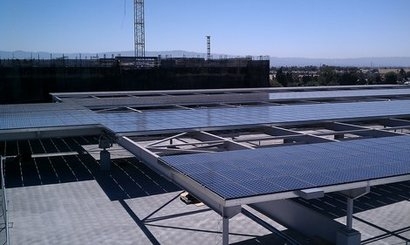
As solar technology continues to reshape modern electricity generation, the number of solar systems in the United States has grown rapidly. The 2018 analysis found that in order to accelerate the installation of PV systems, local, state, and federal governments have provided several incentive programmes for rooftop solar owners. In many states, total incentives are much greater than a solar system’s total costs.
The combination of these incentives, along with the substantial declining cost of installing PV systems over the past several years, has led to significant increases in the use of rooftop PV systems across the country. As a result, many states are re-examining the scope and methods surrounding their incentive programs, and they are now considering programmes that rely more on a competitive marketplace to provide the economically optimal levels of rooftop solar adoption.
The report by ScottMadden was commissioned by Consumer Energy Alliance (CEA) to assist with its Solar Energy Future campaign. The consultancy provided a 2018 update to its 2016 report, ‘Incentivizing Solar Energy: An In-Depth Analysis of U.S. Solar Incentives’. The new report analyses the cost of a typical solar facility in 25 states and details the federal, state, and local incentives available for residential solar PV systems. It found that existing incentives for residential PV are significant, with direct owners, in all but five states, receiving at least 75 percent of total system costs in total incentives under standard rate structures.
ScottMadden also found that utility-scale solar installations are less expensive to install and are incentivised at lower rates per watt than rooftop solar systems. Residential solar PV systems receive, on average, between 104 percent and 140 percent of total system costs in incentives while utility-scale solar installations only receive about 45 percent of total system costs in incentives.
Third-party owned solar PV owners receive the most significant incentives and, in contrast to direct-owned solar, are able to generate additional tax benefits through accelerated depreciation. Solar PV installation may, however, shift costs to other customers. Some net metering programs, which pay residential PV solar customers full retail rates for their excess electricity production, may shift fixed utility infrastructure costs onto non-solar customers. Incentives for residential solar PV vary widely among the states.
“ScottMadden provided a comprehensive review and quantification of the federal, state, and utility programme incentives available for residential rooftop solar system owners across multiple states” said Rick Starkweather, a partner with ScottMadden. “These incentives have greatly contributed to the expansion of solar power across the country by significantly reducing the net costs of installing solar photovoltaic (PV) systems”.
Brydon Ross, vice president of state affairs for CEA, added that solar energy is an important and growing part of America’s diverse energy mix and that CEA strongly support its growth across the country. The group wants to ensure that American solar policies continue to keep pace with the dynamic changes taking place in the markets, so that the continued growth of solar is assured and that it continues to bring tremendous benefits for all consumers.
For additional information:

